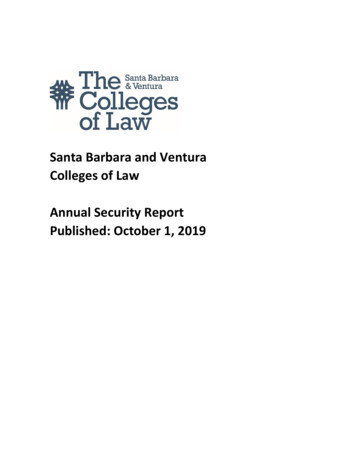
Transcription
Advisory Committee Meeting MinutesSee last page for the purpose of the program’s Advisory Committee, including a description and list of responsibilities.SPONSOR / INSTITUTION NAME:Ventura College School of Prehospital and Emergency MedicineCoAEMSP PROGRAM NUMBER:600186CHAIR OF THE ADVISORY COMMITTEE:1DATE, TIME, LOCATION OF MEETING:10DEC2020, 1500-1730, Zoom Session (COVID)Kathy McSheaATTENDANCECommunity of InterestPhysician(s) (may be fulfilled by Medical Director)Name(s) – List all members. Multiplemembers may be listed in the samecategory.Todd LarsenDaniel ShepherdIra TillesPresent – Placean ‘x’ for eachperson present Agency/OrganizationVentura College Medical Director; SJRMC/PVHVCMESA Medical DirectorAdventist Hospital Simi ValleyEmployer(s) of Graduates RepresentativeMike SandersDaniel GougenJeremey SchumakerWeston J. WilliamsJeff Winter AMR Ventura/ Gold Coast AmbulanceAMR Ventura/ Gold Coast AmbulanceAMR Ventura/ Gold Coast AmbulanceLifeLine Medical TransportLifeLine Medical TransportKey Governmental Official(s)Steve CarrollChris RosaAndrew Casey VCEMSA - EMS AdministratorVCEMSA - Deputy AdministratorEMS – CoordinatorPolice and Fire ServicesHeather EllisJoseph WilliamsJaime VillaJoe Williams VCFD EMS Division; Ventura City Fire DepartmentVentura County Fire DepartmentOxnard Fire EMS CoordinatorVentura County Fire Department, EMS divisionPublic Member(s)Irene OrnelasBarbara Cogert South Central Coast Regional Consortium HWICommunity memberHospital / Clinical Representative(s)Kathy McShea Saint John's Regional Medical Center1The best practice is that the chair is not the Program Director. The Advisory Committee is advising the program.2019.03
P a g e 2CoAEMSP Advisory Committee Meeting MinutesCommunity of InterestName(s) – List all members. Multiplemembers may be listed in the samecategory.Karen MagnaniTom GallegosMeghan ShanerKristen ShortsPresent – Placean ‘x’ for eachperson present Agency/OrganizationSaint John's Regional Medical CenterVentura County Medical CenterLos Robles Medical CenterAdventist Hospital Simi ValleyOtherGerry PantojaJohn EverloveMatthew JewettDana SullivanMatthew McElheniePreston PipalCollin Stocke Ventura College FoundationMoorpark College EMT CoordinatorOxnard College Assistant DeanOxnard College EMT ProgramOxnard College EMT ProgramVentura College Biology FacultyVentura College Biology FacultyFaculty 2Mark RockJohn TerrusaJustin JohnsonAndrew Dowd Ventura College, EMS FacultyVentura College, EMS FacultyVentura College, EMS FacultyVentura College, EMS FacultySponsor Administration2Jennifer Kalfsbeek-GoetzDebbie Newcomb Ventura College, Vice-President of Academic AffairsVentura College Dean, Career EducationStudent (current)Charles ArevaloMelissa CorneyNancy FontanelMichael Maldonado Ventura College Paramedic Student, Class 23Ventura College Paramedic Student, Class 23Ventura College Paramedic Student, Class 23Ventura College Paramedic Student, Class 23GraduateSophie ElliottSteven Keller Ventura College Paramedic Program Graduate, Class 20Ventura College Paramedic Program Graduate, Class 21Program Director, ex officio, non-voting memberTom O’Connor Ventura College School of Prehospital and EmergencyMedicine, Program DirectorMedical Director, ex officio, non-voting memberTodd Larsen Ventura College Medical Director; SJRMC/PVH3Additional faculty and administration are ex-officio members.Add rows for multiple members of the same community of interestIf the program has additional named communities of interest, list the community of interest and the name(s) that represent each.232019.02
P a g e 3CoAEMSP Advisory Committee Meeting MinutesAgenda Item1.Call to order2.Roll callDiscussionKathy McShea called the meeting to order at 1506.Members are present via Zoom session due to COVID in-person meetingrestrictions.ActionRequiredNoNoMembers reviewed the prior minutes pg 2-19.3.Review and approval of meeting minutesThe minutes of the 13DEC2019 meeting were approved as written.Motion to approve by Joey Williams. Second by Andrew Dowd.NoMoorpark College EMT 4.VCCCD EMS Program Reports 2019.02Coordinator/EMT Director, John Everlove, shared that theeducational program has been hit hard by COVID, especiallyprograms trying to complete clinical hours in patient contact andcaregiver roles. Considering this challenge, he has continued theEMT Program. 22 students completed the Spring 2020 semester,despite gaps and time off, and all successfully passed the NREMTin their first attempt and have all obtained employment.Moorpark College continued the hybrid mode (online lecture/inperson lab) in the Fall 2020 semester and will continue this modelin Spring 2021.Students have been given job opportunities with the HealthDepartment as screeners.John indicated that he is not seeing any decrease in the numberof students. In fact, there is an increase of people eager to enterthe EMS field.He is advocating to get students back into the clinicalenvironments. Despite the uptrend in COVID cases, the Nursingand Rad Tech Programs have access to clinical facilities, and he’shopeful for the same for the EMT Program.He thanked Tom for his collaborative efforts, and thankedhospital and ambulance providers for opening doors to placestudents.NoLeadGoal Date
P a g e 4CoAEMSP Advisory Committee Meeting MinutesAgenda ItemDiscussionActionRequiredOxnard College EMT The Oxnard College EMT Director is on leave. Dr. Matt McElhenieis currently serving as the Interim Director. He teaches theOxnard College EMT Program and is an adjunct faculty for theVentura College Paramedic Program. He is also President of theCalifornia EMS Educators Association.Matt shared there are four cohorts moving forward during theFall 2020 semester. There has been some attrition as a result ofCOVID, and he is trying to manage the difficulty of the lack ofplacing students in the field, and therefore is doing classroomsimulation.Oxnard College applied to be part of the EMS Virtual Reality PilotProgram being led by American River College.Oxnard College is moving forward using ReelDX (a patient videosystem) and other programs to augment lack of field experience,and to help students move forward and complete the course.During the Spring 2021 semester, Oxnard College will continue touse high-fidelity simulation instruction, however, for Fall 2021semester they are targeted to get back into the field.NoVentura College EMT PD reported that when COVID hit, Ventura College lacked PPE,therefore, all students were granted an excused withdrawal inthe Spring 2020 semester and 0 students completed. The Fall2020 hybrid course resulted in better retention rates than in thepast, however, many of these students were returning fromspring semester to complete their EMT training.During the Spring 2021 semester, Ventura College will continuethe hybrid mode of instruction and on-campus simulation, but PDis hopeful to return to the field in Fall 2021.Other Feedback about EMT Programs 2019.02Dr. Todd Larsen informed John, Matt, and Tom, that he may beable to assist, from a Chief Medical Officer side, to push forNoLeadGoal Date
P a g e 5CoAEMSP Advisory Committee Meeting MinutesAgenda ItemDiscussion hospitals to allow students back into the clinical environments.This is important for the community, and he would like to assistin making this happen.Jeremey Schumaker, Regional Director for AMR indicates there isa conversation happening from national perspective to get EMTstudents employed. Though there is a priority for paramedics, ifemployers do not help EMT students, there could be a shortagein the long-term.ActionRequiredOnly if EMTsare notpermitted inclinical sitesVentura College Bio Dept 5.Endorse the Program’s minimum expectation[CAAHEP Standard II.C. Minimum Expectation] “To prepare competent entry-levelParamedics in the cognitive (knowledge),psychomotor (skills), and affective (behavior)learning domains with or without exit points2019.02Preston Pipal, VC Biology Department, shared that an 8-weeksummer section of Anatomy/Physiology will resume at VenturaCollege as an entirely online course beginning Summer 2021,comprised of one lecture and two labs.The ANPH curriculum was revamped and will be taught in anonline asynchronous format to fit student’s work schedules. Theonline labs will include imaging with videos that provide 3Ddimensionality; student labs with pre-recorded physiology data;online electromyographs, respiratory, pulmonary function testswith analysis of data; and aerobic exercise lab to be completed athome. Though in-person labs are preferable, the BiologyDepartment is prepared to offer this course in the online format.The course will be part of the zero-textbook-cost program, and allmaterials will be provided; Students will only pay tuition.Preston introduced Collin Stocke, faculty of record. Collin was aformer EMT and has three years of medical school experience.The goal is to provide students a good foundation, includingpathophysiology so that they hit the ground running in paramedicschool.Program Outcomes and Objectives pg 20-21Clinical Department Objectives pg 22-29The required goal language was reviewed and was approved for continueduse.No additional goals were identified.NoNoLeadDr. Larsen/TomO’ConnorGoal DateSept2021
P a g e 6CoAEMSP Advisory Committee Meeting MinutesAgenda Itemat the Advanced Emergency MedicalTechnician and/or Emergency MedicalTechnician, and/or Emergency MedicalResponder levels.” Establish / review additional programgoals 4 DiscussionActionRequiredThe minimum expectation is located in the Student Handbook Trauma rounds were modified slightly due to current state ofCOVID. An additional ER shift was added so that all studentscould pick a shift at VCMC. To decrease head counts in thetrauma department, the program established an ER shift/traumaround.Student Minimum Competency Matrix pg 30-37Summary graduate tracking reports pg 38-436. The minimum numbers of patient/skills contacts were reviewedand were to remain the same. Use of the COVID data from 2021will be used to determine minimum goal for non-pandemic times. In 2018, the committee agreed to use to use minimumrequirements. Any course that started July 1st, 2019 wererequired to meet these minimum requirements. The 2018-yearclass data in FISDAP did not align with report, and this has beencorrected. 2019 was the first year where data aligns. Table 1 hasthe CoAEMSP numbers and the program matched thosenumbers. Currently, there are 23 students represented, and twoare almost done, so the numbers will be adjusted a bit more.Every student met the minimum requirements.Endorse the Program’s required minimumnumbers of patient/skill contacts for each of therequired patients and conditions[CAAHEP Standard III.C.2. Curriculum] NEW Appendix G: Student MinimumCompetency Matrix (effective July 1,2019) Review summary graduate tracking reports 4 Additional2019.02 Due to COVID, it is anticipated that data from this year’s cohortwill be the minimum set of requirements the programexperiences. There is more time built into the procedures tosimply enter and leave a room due to the donning and doffingprocess. Most students currently are struggling with FISDAP. Havingeverything on Canvas, listing the goals for the day has helpedprogram goals are not required by the CAAHEP Standards. If additional program goals are established, then the program must measure them.NoLeadGoal Date
P a g e 7CoAEMSP Advisory Committee Meeting MinutesAgenda ItemDiscussionActionRequiredstudents. PD and faculty work with skills instructors to ensurethey stay aligned with the goals of the day.Annual report pg 44-53Grad survey results pg 54-55Employer survey results pg 55-56RAM summary pg 57-60RAM student Program survey pg 61-66RAM preceptor eval of student pg 67-74RAM student eval of preceptor pg 75-787.Review the program’s annual report andoutcomes[CAAHEP Standard IV.B. Outcomes] Annual Report data Thresholds/Outcome data results Graduate Survey results Employer Survey results Resources Assessment Matrix results Other 2018 Annual report Data Each spring, we report out and place a data matrix. NREMT: 14 attempted (plus one from prior cohort) 12 (plus one from prior cohort) successful first attempt 1 student was successful on second attempt 1 student was successful on fourth attempt First attempt success for this cohort 86% (with prior student 87%) Success within three attempts 93% (with prior student 93%) Success within six attempts 100% Retention rate: 78.9% Positive Placement: 100%National Registry in Spring 2020 Having the National Registry toward the end of the program,after internships, helped students receive the benefit ofinternship to help pass the skills portion, but due to COVID, VCcould not offer the skills exam. Students drove to Orange Countyto complete the registry exam. The exam was 75- 80 moreexpensive plus mileage to Orange County. Last year’s classpassed on the first attempt. Tom provided everyone a refresherbefore skills exam. Within two-three weeks upon completing exitexam, students were receiving their paramedic license.Grad Surveys2019.02NoLeadGoal Date
P a g e 8CoAEMSP Advisory Committee Meeting MinutesAgenda ItemDiscussion ActionRequiredLeadGoal DateGraduates indicate many students were disappointed with thefull-time faculty member who left in the middle of the program.There was room for improvement with the skills labs.Preceptor Comments Preceptors noted some students lacked IV skills. PD believes it’sa transition issue, where students struggled translating the skillslearned in the classroom to real life. Preceptors noted students need more 911 experience. PDindicates a program pre-requisite is for applicants to have 1000hours of 911 experience, but this is not realistic. Many EMT’s donot do assessments and have a tandem role where they facilitatethe paramedic and often assume a scribe role. PD notices that EMT’s who were longer in the system, have builtsome bad habits. There is more success in students who enterparamedic school quickly after becoming an EMT andacademically perform better. PD indicates that after COVID hit, it took about 4-5 weeks tophase into internship, and the skills momentum students hadachieved was diminished.8.Review the program’s other assessment results[CAAHEP Standard III.D. Resource Assessment] Long-range planning Student evaluations of instruction andprogram Faculty evaluations of program Course/Program final evaluations Other evaluation methods 2019.02Success in long range planning The program acquired LifePak 15 and Zoll monitors through theprogram review process this year. Delivery was made last weekfor the final monitor. These are the mirror image of what is inthe field. Currently exploring an Immersive Interactive Simulator with IreneOrnelas from the Healthcare Workforce Initiative to transformthe learning space into any location. Short throw projectors thatare touch-enabled allow for students to interact with images tohighlight hazards or activate images to open a refrigerator, turnoff TV, turn on light, etc. It becomes a way to elevate some of thesimulations to provide students with other situations andenvironments. Attempting to work out funding as a collaborativeeffort with Forensics and looking at additional ways theimmersive room could be used with other programs on campus.InteractiveSimulatorTom2021 Fall
P a g e 9CoAEMSP Advisory Committee Meeting MinutesAgenda ItemDiscussionActionRequiredLeadGoal DateAdd 2ndCohortCollege/Tom2021 FallStudent Evaluations of instructors The Spring 2020 student evaluations of faculty were notcompleted. Unable to collect data due to COVID. The Fall 2020 student evaluations were completed, and resultswill be provided to the Department upon completion of thesemester.Budget for Supplies Budget increase in supplies for COVID were made to create apackage for students to take home for skills practice via Zoom ifwe went back to lockdown. Quarantined students have beenable to continue with skills via Zoom with this skills-kit. Skills instructors and hours were increased to maintain low headcounts as the program spread out to multiple spaces on campus.CARES funding was planned for these additional costs. The staterequirement is 10-1 in EMT and 6-1 in paramedic studies. Supply costs increased this year due to COVID demands on thesystem. Some items (like gloves) are being sold to direct patientcontact sites only. N-95 masks were obtained through the EMSSystem Disaster Cache for the paramedics to work with the fieldproviders. Additional masks will be needed for this cominginternship. We were able to acquire a supply of surgical masksfor the paramedic students which the program is required toprovide for each student by most clinical sites. Department is working with CARES on campus to augmentprograms and get additional masks, extra cleaning equipment todisinfect simulation skills labs.9.Review program changes (possible changes) Course changes (schedule, organization, staffing, other) Preceptor changes Clinical and field affiliation changes Curriculum changeso Contento Sequencing2019.02Course Changes Paramedic students request additional skills lab time. Currenthours are approximately 480 hours of didactic and skillsinstruction. For 2020, the skill lab components held just over 100hours of time with focused skill development. There areadditional hours of demonstration and simulation that wereavailable on a limited basis due to COVID restrictions designed tominimize time on campus.
P a g e 10CoAEMSP Advisory Committee Meeting MinutesAgenda ItemDiscussionActionRequiredLeadGoal DatePreceptors PD will need list of available preceptors early. Anyone interestedin precepting will need to complete the FISDAP online trainingcourse which the program can provide. Contact PD for details.List of preceptors requested by 1/6/21 to allow time forprocessing, verification, and assignment to intern. Anticipatedstart date for internship is the last week of February/ first weekof MarchClinical and field changes The program added AMR Santa Barbara as a field site. Santa Paula High Hospital added OR privileges for students.Curriculum The National Paramedic Education Standards are in their finalpublic comment phase with release of the revised standardsanticipated in early 2021. Course curriculum will be adjusted tomeet the revised standards. The big take-away was a move tocompetency-based completion and not an hours-based system,although guidelines were given for each of the levels.10.Review substantive changes (possible changes)[CAAHEP Standard V.E. Substantive Change] Program status Sponsorship Sponsor administrative personnel Program personnel: PD, Lead Instructor,other Addition of distance education component Addition of satellite program 2019.02Personnel Changes No changes to college administration The full-time faculty that was hired last fall resigned. Atemporary full-time faculty was hired in the Spring 2020 term andFall 2020 utilized adjunct faculty to fill the gap. Currently, noadditional full-time hiring is anticipated to replace the positiondue to COVID and potential funding issues across the communitycollege system in the coming year(s).Addition of cohort/ modification of FT format to PT The full-time course offering has been in existence for 22 years.Employers have requested a part-time course to allow foremployees to remain active in their field. Additional cohortrequests have been made at each advisory committee meetingand in separate requests to Ventura College administration overFT Facultyhire – Out ofcycle requestTom2021 Fall
P a g e 11CoAEMSP Advisory Committee Meeting MinutesAgenda ItemDiscussion 2019.02the years. The topic of needing an additional paramedic cohorthas come up in Strong Workforce and work-based learningmeetings.The push has been to keep a condensed program and exploreways to accelerate the process to meet the requests of the firedepartments. Educationally speaking, we don’t have enoughtime to get everything on a solid foundation for all students(approx. 20% attrition rate) to be successful. Accelerating theprogram to meet a 6-7-month window may increase the attritionrate. Slowing down to allow time to process the material with apart-time program (15-16 months) may fit well.Jeremey has been involved in Strong Workforce meetings, theRegional Consortium, and other committees to advocate forprogram growth. Ventura College and Cuesta College do notmeet the local needs. Demand is so great, that AMR is startingan in-house class in Santa Barbara, yet the cost is greater thanoffering the program through Ventura College. He guaranteesthat second cohort will fill, and he cannot emphasis enough howimportant this is. The lack of a part-time program drives peopleto programs out of the county. Overwhelmingly, the place wherestudents do internships is where they end of up working, so it’simportant to keep students local. A part-time model helpsstudents retain employment while they attend school.Dean, Debbie Newcomb, indicates there are currently budgetunknowns at the state and local levels. The college hears theneed loud and clear from employers and clinical partners. Shoulda second cohort materialize, another area of concern will be tosecure adjunct faculty to fill the positions. She encouragesinterested applicants to submit applications to the college,because adding another section includes hiring faculty for thisgrowth.Vice President, Dr. Jennifer Kalfsbeek-Goetz, indicates that thecollege’s goal is to graduate students into the workforce,however, the college district is expecting a 10% cut district-wide,and one of those cuts are in faculty by reducing the number ofelective classes in order to meet those budgetary demands,therefore, it is hard to commit to adding a program. The districtwill have a better sense of the budget in a few months.ActionRequiredLeadGoal Date
P a g e 12CoAEMSP Advisory Committee Meeting MinutesAgenda ItemDiscussion ActionRequiredDr. Larsen encourages the college to consider this strongly, fromthe standpoint of both private industry and fire department, as itwill be a huge benefit to our local community. All paramedicsobtain a job afterwards, have a livable wage, and it will doublethe number of EMS employees.Gerry Pantoja, Director of Major and Planned Giving at theVentura College Foundation, indicated that the Foundation isavailable to discuss funding for a second cohort through outsidesources.Overlap clinical with didactic portion Other potential changes would be to overlap clinical experienceswith classroom learning. This creates additional issues withcollege calendars and course curriculum (PMV02 componentsbeing built into PMV01, possibly not having enough access tocomplete the goals in a short period of time.) One additionaldownside to spreading out the clinical experiences would be lossof momentum in skills practice. Kathy’s initial thought is to leaveit as is. Dr. Larsen agrees to leave it for now.Completion and Success Rates The paramedic program has a 70-80% completion rate. National Registry 86% passing rate on first attempt, indicate weare meeting National goals.11.Other identified strengths2019.02Significant Improvement in Preceptor/Student Feedback Kathy McShea thanked and commended Dr. Larsen, the PD, andJohn Terrusa for striving to improve the preceptorshipexperience. There are fewer negative comments from studentsabout their preceptors, which demonstrate they are making greatstrides to make improvements in training and student-preceptormatching. They deserve a lot of credit for what they’veaccomplished.NoLeadGoal Date
P a g e 13CoAEMSP Advisory Committee Meeting MinutesAgenda ItemDiscussionActionRequiredLeadGoal DateResume preCOVIDprogramstyleFaculty/College2021 FallCOVID Patient experiences may be impacted by wait times for COVIDclearance. Donning/Doffing procedures will slow down thestudent progression through assessments. IV starts may beimpacted. ET placement in the ED may decrease. Time will tell.Attrition Equity-based approach to improving attrition12.Other identified weaknessesStudent Selection Process Selection process is based on first-come first-served – should wemodify the process, increase requirements? For 22 years, admittance into the paramedic program has beenbased on a first come basis. We don’t award points. Someprograms have gone to selection criteria. Some preceptors have commented that we need a better a mixof students coming in. The military background students withexperience have been given overrides to enter the program. The waiting list is impacted. Currently, there is a full list to fill the2021-2022 class and the 2022-2023 class. There will be anadditional 20-30 students who will be submitting applications. Joey Williams, Operations Supervisor with Lifeline, proposesgiving incentives to local residents to be admitted into theparamedic program. He has about 10 employees who haveapplied, and must wait a year to get in, and sometimes he losesthem. Companies rely on the college to support them locally,otherwise, they need to need to hire from outside the area. Itwould be beneficial to give local students preferential status. Dr. Larsen said that we do not have enough students graduatingto meet the local need.Feedback from current students This year’s paramedic group has been vocal about needing moreskills hours. The program consists of 480 hours of class time, ofwhich 100 are dedicated to skills practice, and the other islecture/lab components. 20% of time is spent on skills.2019.02
P a g e 14CoAEMSP Advisory Committee Meeting MinutesAgenda ItemDiscussion 13.Identify action plans for improvement2019.02ActionRequiredLeadGoal DatePreceptorTrainingupdateJohn/TomTrail 2021and refinefor 2022Paramedic student, Melissa Corney, understands there weremany challenges this semester, but she would advocate for moregeneral availability, as much skills practice as possible, and morereal-life experiences.Paramedic student, Mike Maldonado, indicates that the face-toface interactions are very helpful. Live zoom sessions forlectures, rather than asynchronous lessons, are preferable. Manystudents had trouble with the pharmacology essays, and the classwould have preferred a more traditional testing approach.Paramedic student, Charles Arevalo, agrees that more live Zoomsessions would have been beneficial for students who havequestions, rather than texting, emailing, or waiting for live/inperson classes to ask questions.Paramedic student, Nancy Fontanel, realizes a lot goes on behindthe scenes, and COVID took a toll. She chose to attend VCbecause of its hand-on instruction method, so going online waschallenging; the recorded zooms were difficulty as she wouldhave liked to ask more questions; otherwise, she feel confidentall around.Preceptorship PD will send an email looking for preceptor availability, to getFISDAP training out them by early January, set up a sit-down tolook at goals, address preceptor comments, and give preceptor abackground on the student. Faculty, John Terrusa, indicates that setting up preceptor trainingearly, will be a significant improvement. Having preceptors linedup early, will permit preceptor and students to develop amentorship role. PD and faculty try to match students in different ways, such as bypersonalities, geographically, and learning styles. One of the challenges for newer preceptor is often they will havenotion that this is a new hire, but these are not new hires, theyare new students and have zero experience as a paramedic. PD and faculty would like to eliminate misunderstandings aboutwhat a is preceptor; it’s about teaching and mentorship. Thechallenge is changing the cultural mind set – and remembering
P a g e 15CoAEMSP Advisory Committee Meeting MinutesAgenda ItemDiscussionActionRequired“this was done for me when I became a paramedic, and now Iwant to pay it forward for the next generation.” The goal is todevelop mentorship roles.Employee Mandates (Skills Instructors) The EMT and paramedic programs rely on skills instructors toassist with skills labs, yet there is an increase in mandates byprimary employers, resulting in skills labs being left at the lastmoment without instructors to meet regulatory policies. Jeremey indicated it might help to know what the skills labsschedules are, but it’s difficult because employers need moreparamedics. If we could put more paramedics in the field, itwould help reduce the mandates.COVID Exposure During the Fall 2020 semester, about a dozen EMT students werequarantined. Fortunately, there was no transmission from aCOVID positive student to another student on campus.14.15.Other comments/recommendationsStaff/professional education2019.02EMS Scholarships by the Ventura College Foundation Gerry shared that in this year’s paramedic scholarship cycle, 11paramedic students have been awarded scholarships through theVentura College Foundation. In addition, three EMT scholarshipswill be awarded next year.Virtual Conferences PD is attending CoAEMSP workshop in January 2021. Faculty attended the virtual EMS World virtual conference inSeptember and the NAEMSE Symposium in October. PD attended the IMSH simulation conference prior to COVID andvirtually in 2021 JSPAC Faculty have been noting how conferences host virtual sessionsand simulation and have been incorporating ideas intoinstruction.NoNoLeadGoal Date
P a g e 16CoAEMSP Advisory Committee Meeting MinutesAgenda Item 16.CoAEMSP/CAAHEP updates 17.Next accreditation process(i.e., self-study report, site visit, progress report)ActionRequiredLeadGoal DateAttendCoAEMSPWorkshopTomSpring 2021Prepare omEarly 2021DiscussionCoAEMSP periodically adds documentation to their websitethat is often unnoticed for more than a year. The programs
The Oxnard College EMT Director is on leave. Dr. Matt McElhenie is currently serving as the Interim Director. He teaches the Oxnard College EMT Program and is an adjunct faculty for the Ventura College Paramedic Program. He is also President of the California EMS Educators Association.
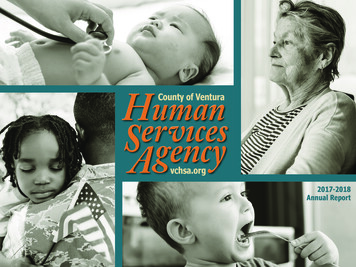
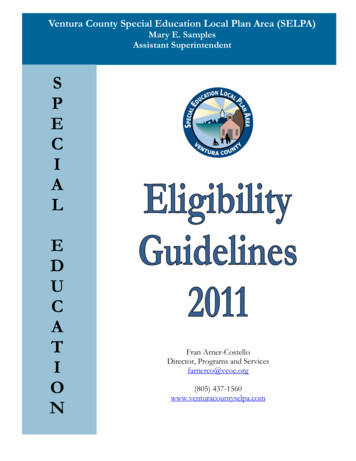
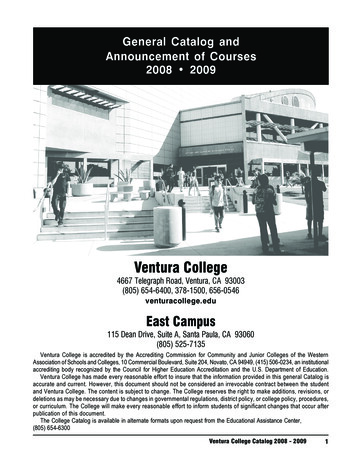
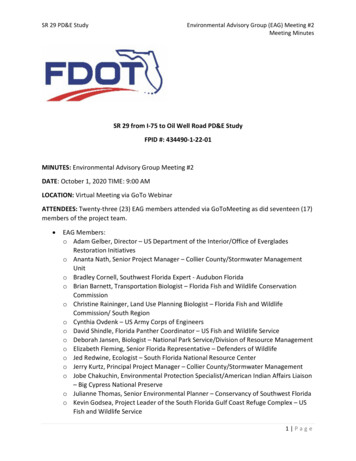
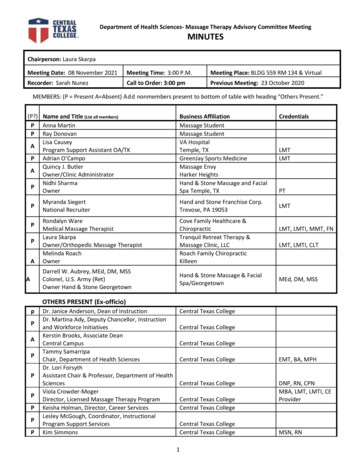
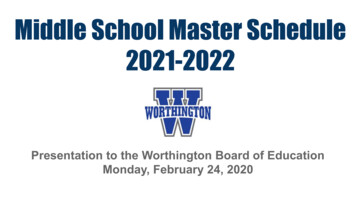
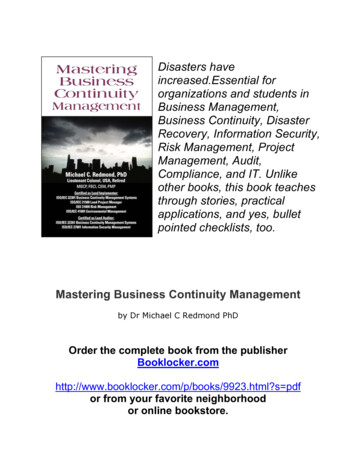
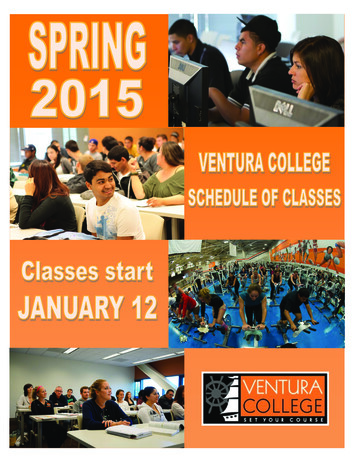
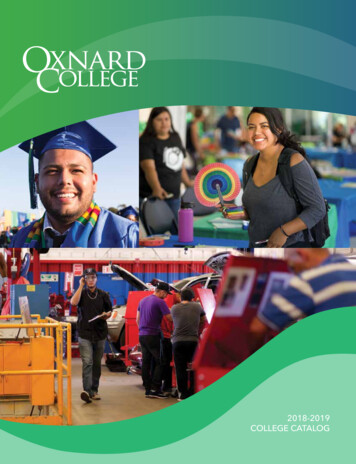
![[TAY SERVICE GUIDE] - Ventura County](/img/26/tay-community-services.jpg)
